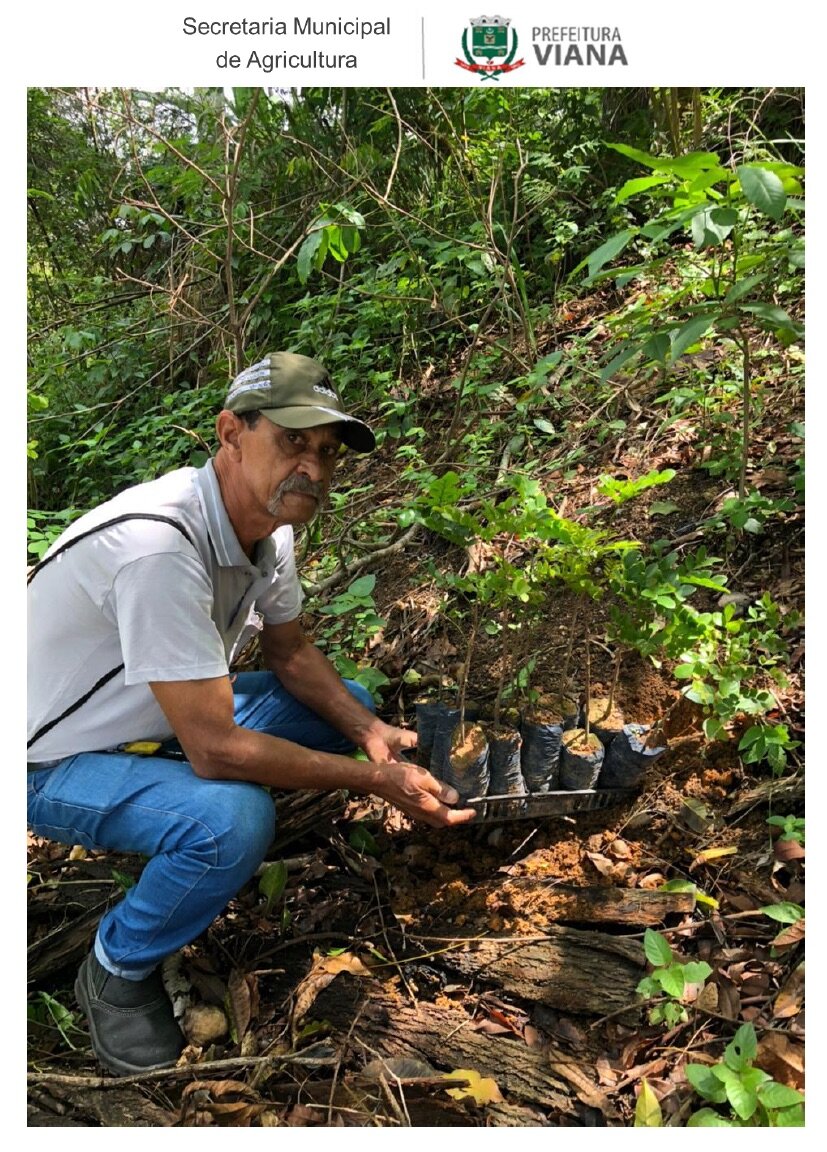RAIN’s business relationships enable our partners to do some incredible things. David Harber Ltd. makes dramatic outdoor sculptures. The company is also changing the colour of the landscape of the state of Espírito Santo in Brazil. They’re contributing to our Trees of Music project, growing endangered pernambuco trees to regenerate springs and to ensure that artisans can sustainably produce bows for the string section of the orchestra. 9,000 of the trees are financed by David Harber Ltd.

When land is stripped of its forest cover, it dries up. Without trees to stabilise soil, provide shade and release water vapour into the air to make it rain, the land gets drier, dustier, browner. It barely supports life beyond invasive Alpine grasses, and as the native vegetation dies off, the birds, insects and mammals start to disappear. Gradually the colour fades from the landscape, parched soil blows away in the wind and is carried away by floods. Farmers are left with empty hands and desiccated futures.
Music and colour
Trees of Music is a partnership with Brazilian bowmaker Marco Raposo to sustainably grow pernambuco to supply the bow making trade, restore islands of biodiversity in the Atlantic forest, and regenerate springs to bring back life to the land. Marco’s nursery produces pernambuco saplings to be used in this work, and together we are growing 50,000 saplings in the initial phase. With more funding, we will expand into different parts of Brazil and other species used to make instruments.
Marco has been busy. His team has already grown 26,000 seedlings since December, and the first saplings are now ready to go in the ground. Some will be planted for future harvest, to make bows and ensure the sweet sounds of the string section continue to sing. But this work is about more than sustainability; the R of RAIN is ‘regenerative’. We want to regenerate areas on the brink of desertification, bringing them back to lush greenery, supporting biodiversity and economic security, and offering hope for the future.
That’s why Marco has sent half of these young trees to carefully selected farmers in six municipalities of Espírito Santo. They will grow to maturity, not to be felled but to restore springs and regenerate degraded areas. The roots of these saplings will create strong foundations, preventing soil erosion, and their branches will shade the soil and provide homes for many birds, animals and insects.
One of the farmers is Guilherme Firme Lube, seen here planting some of the first Trees of Music on his farm in Viana.

Impacts spreading through the network
Pernambuco has the ability to ‘fix’ nitrogen; it partners with soil bacteria to absorb nitrogen from the air and uses it to enrich the soil around its roots. That resource is also shared with other plants via underground networks. In agroforestry systems, this means that the entire plot is enriched by the presence of this one species, giving a boost of natural fertiliser to other species planted with it. A strong root network allows a mycorrhizal network to form, gathering more resources and sharing information to create a resilient ecosystem. RAIN works in a similar way, sharing abundance between the projects on our network. We’re talking to agroforesters in Espírito Santo and the neighbouring state of Minas Gerais to ensure that thousands of Marco’s saplings are used in agroforestry plots to recover land degraded by industrial farming. In this way, the investment made by David Harber Ltd. can cascade through the RAIN ecosystem, greening tracts of land in diverse places.
RAIN loves connecting with people who have brilliant ideas – one of the connections we are pursuing is going to use prunings of these pernambuco trees to make dye. The local name for the species is ‘pau-brasil’, from the Portuguese word brasas (embers), because the red dye made from its bark seemed to be so bright that it glowed with the brilliance of fire. This wood was so highly prized that the country of Brazil was named after it, and so many trees were felled that the wild population has dwindled to the edge of extinction. Rather than felling this iconic and endangered tree, this ecologically sound way of making dyes uses only parts of the tree that would normally be considered waste. Using dyes made from pernambuco wood and other plants, a whole new wave of colour and brilliancy is introduced to the landscape, as well as a regenerative income for farmers, making their lives more vibrant too.
RAIN has a diverse portfolio of projects ready to regenerate landscapes in Brazil and change lives for the better. If your business would like to learn more about how to support frontline communities bringing colour back to our fragile planet, visit RAIN’s website to find out more.
Visit the David Harber Ltd. website








